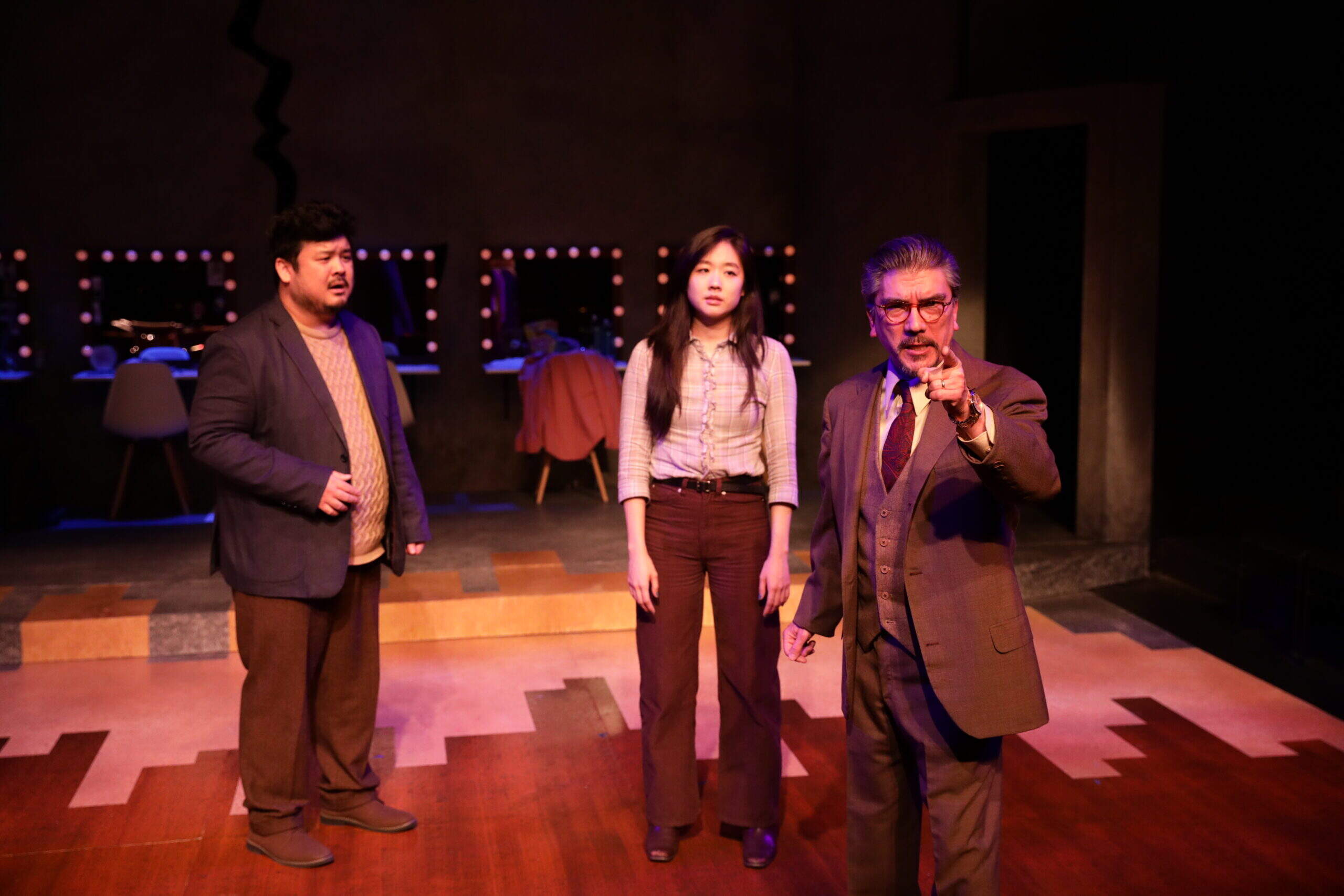Advertisement
REVIEW
'Yellow Face' walks a line between reality and fiction

Playwright David Henry Hwang’s impressive body of work includes several powerful plays exploring identity, often inspired by real events (the Tony award-winning “M. Butterfly” and “Chinglish,” to name two). Unfortunately, “Yellow Face,” now playing at the Lyric Stage, feels like an early draft of an idea the playwright has not yet fleshed out, a childish “why me?” rant framed by meta commentary rather than a compelling consideration of racial profiling and its repercussions.
Hwang’s script shifts between autobiography, documentary and fiction without convincing us that any of these fit together. He has made himself the protagonist, and as DHH (as he’s called here), Michael Hisamoto works hard to mine the hubris and humor of a man caught in an embarrassing situation of his own making. Through sheer strength of will Hisamoto tries to pull together a plot that opens with DHH retelling the story of his objection to the casting of a white actor (Jonathan Pryce) rather than an Asian in a role that was described as Eurasian, leaps over to DHH’s own mistake casting a white man in the Asian lead in “Face Value,” his backstage farce written in response to the casting controversy, and then ricocheting to the targeting of Asian Americans with unsubstantiated accusations of espionage.
A talk show scene in which an overeager DHH, desperate to cover up his “Face Value” casting error, is the best scene in “Yellow Face.” Hisamoto, as a jumpy DHH, interrupts at every opportunity, even insisting the actor, Marcus G. Dahlman (Alexander Holden), is a Jew with Siberian ancestry. In encouraging Dahlman not to allow people to judge him by the way he looks, DHH compounds his error by inspiring Dahlman to take on more Asian roles, which he does with gusto, winning acclaim for his performance as the lead role in “The King and I,” dating an Asian woman and becoming an advocate in the Asian community. We even follow Dahlman’s email correspondence with DHH as Gee spends an extended vacation in China (illustrated with projections on the upstage wall), developing a broader understanding of our shared humanity in a Dong village where the entire community sings together. But this intriguing theme of connections tied to music, going back to the days of the Silk Road, is picked up and then tossed aside by Hwang before it can be developed into a meaningful subplot.

Another theme – of immigrants who embrace the American Dream despite overt discrimination – is introduced late in the play in the form of HYH (a wonderful J.B. Barricklo), who develops from a caricature of a successful businessman and goofy dad in the first act, to one of many Asian-Americans targeted in the Senate investigations into Chinese influence in the US. Again, the theme feels tacked on and underdeveloped.
Director Ted Hewlett does his best to keep his actors moving at a brisk pace, but sometimes that means they race through their lines, blurring our understanding of the headlines they rattle off, and weakening the comedy. All of the actors – except for Hisamoto – play multiple characters, but they don’t provide enough delineation to make one character stand out from another.
Szu-Fen Cheng’s set design adds some complexity to the action, with the two-toned floor planking resembling a city skyline, and the profile on the upstage wall changing colors (thanks to Baron E. Pugh’s lighting) depending on the mood. Less effective are the dressing room stations upstage, complete with makeup mirrors encircled by light bulbs. They might have been commenting on the backstage setting of “Face Value,” or even the “faces” or “masks” we all must don at one point or another, but no clear connection is made and they become another disjointed distraction.
The play opens with a quote from Hwang projected on the stage: “I present my stories as fiction.” And it ends with DHH directly addressing the audience to tell us he is trying to give his fictional character, Dalhman, a happy ending, even as he goes back to searching for his own face. Perhaps if he had created a little more distance between reality and fiction, he might have crafted a more compelling play.
“Yellow Face,” runs through June 23 at the Lyric Stage Boston, www.lyricstage.com.